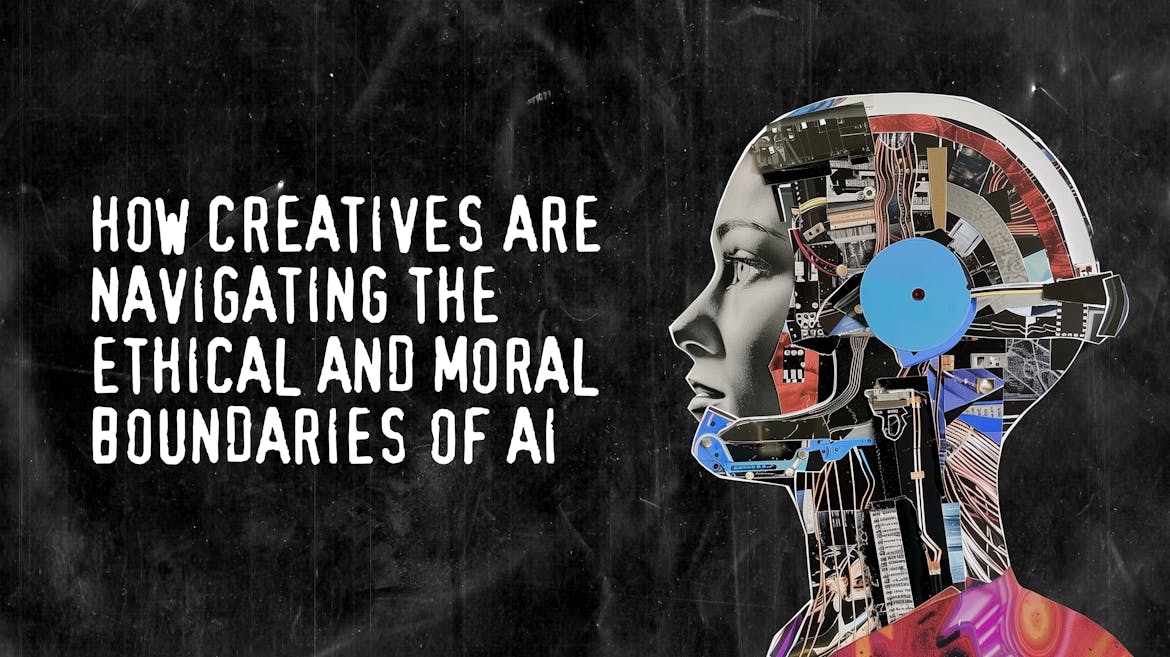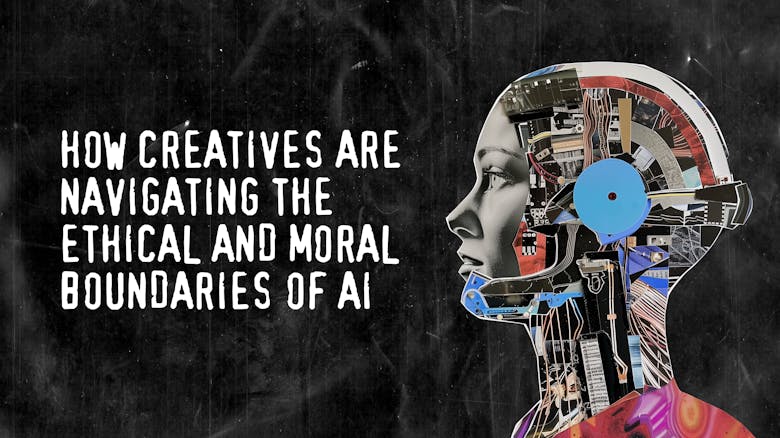
How creatives are navigating the ethical and moral boundaries of AI
Generative AI has rapidly transformed content creation offering unprecedented creative potential. I sat down with our internal creative team to find out what they thought about the future of AI integration in the creative field. So many different ideas and opinions were thrown around, but what came up the most was concerns around authenticity, biases, ethical consideration, and legal issues looming over their heads. With everything in mind, I reached to VCCP & Faith
In just three years, generative AI has emerged as a transformative force, revolutionising how visual and written content is generated. Generative AI has been around for several decades and OpenAI stands out as a pioneering organisation. It has made significant strides in developing and providing accessible AI technologies like ChatGPT, which gained prominence following the launch of GPT-2 in February 2019, and DALL-E in January 2021. Others have since joined the arena, such as Midjourney, released a year after DALL-E, while Adobe introduced its AI tool in May 2023. Society has quickly integrated generative AI into everyday life, for purposes of both business and pleasure, reflecting a broad willingness to adopt and trust new technologies. This shift in behaviour also exemplifies the current state of consumerism, “I want something, and I want it now”, as these tools offer us fast results, though often lack in quality or originality.
Generative AI currently dominates discussion in the creative industry and is frequently framed as a double-edged blade: both good and bad, and rightly so. As we leap into the unknown, creative businesses must consider the wonderous possibilities of AI alongside the negative impact it may have. The ease with which users leverage generative AI to create fake or misleading content, for example, is alarming. We’ve seen Donald Trump being wrestled to the ground by police officers, Pope Francis looking swanky in his puffer jacket, and a recent series of Taylor Swift inspired explicit deepfake images. It leaves us wondering: what will come next?
We’ve consulted both Faith, a creative agency powered operated and run by AI launched by VCCP, and Ingenuity’s very own AI guru, Dom Garwood, about the duality of AI, hoping to better understand its origins and creative trajectory.
Will Creativity Suffer?
Midjourney and DALL-E are popular examples of generative AI image tools currently being used in creative industries. They empower people to flex their creativity, enabling users to generate wild, abstract, out-of-this-world images with simple text commands (“Show me an all-knowing elephant sat on a tortoise”, for example). These programmes are constantly being honed and improved, becoming increasingly effective at turning imagination into reality. There are limits, however, as Dom asserts, “AI is rarely capable of producing print-ready designs or art”. When asked how they would approach these limits both Dom and VCCP & Faith, recommended using such tools during early stages of the creative process to help visualise and gather ideas for inspiration. “The one thing that won’t change is human dominance in the creation of novel ideas and strategies” (Ben Hopkins, Creatives Director, VCCP & Faith), as AI imaging programmes are not creative themselves; they rely on the creativity innate to people in people to steer them.
Generative AI tools have been causing concern around job security among graphic designers and content creators, rather than fuel enthusiasm. Anyone, without formal training or technical expertise, can now bridge the skills gap with industry professionals with a simple string of words and a click. All you need is someone with a little originality, and AI creates new images based on old material – it emulates and mimics, it is not wholly original. It is trained on a large database, from which it generates images by deconstructing and remoulding images it knows and turning them into new repurposed images based on user prompts, without understanding the subtle subtext humans possess. Essentially, it is a mathematical process producing images, of varying degrees of quality, in a short span of time. While there may come a time in the future where the human creative process cannot keep up with generative processes, we’re not quite there. Though if, or when, it does happen “will be the point where creativity and what is passable as design will suffer”, says Dom. Amidst the rise of AI, there are concerns around the authenticity and uniqueness of AI generated content. While it can mimic human creativity to a certain extent, discerning eyes can often spot the difference, as AI generated images may lack the nuanced touch of human expression.
Legal Issues & Bias… AI comes with a lot of baggage…
Due to the creative methodology applied to generative AI, which is essentially a copy of other work, there are legal and ethical considerations involved in its use. Creative professionals are increasingly investing in protective measures, intent on keeping their content from unauthorised use. In navigating an ever more complicated IP landscape, brands and agencies are investing more resources into data protection, privacy, and ethical regulations to avoid legal repercussions. It comes as no surprise that VCCP & Faith has its own guidelines, which will probably change due to the new, and likely endlessly, developing issue of AI and copyrights.
VCCP & Faith, our AI companion, raised another key concern following the “shelving of some creative projects as the technology still wrangles with issues, such as bias”. AI bias is an ongoing issue, affecting tools currently on the market. AI and algorithms are not totally neutral systems, they are products of the data on which they are trained, which can be flawed. And while the integration of AI can certainly improve creativity and efficiency, bias persists as an issue which must be overcome. Innate bias in the core data applied to AI models and algorithms can shape the content being produced, having the potential to influence brand messaging and creative output. When ask about this challenge, VCCP & Faith responded by saying that they “remain committed to the vision that Generative AI is an accelerator for human creativity when used responsibly” (Peter Gasston, Innovation Lead, VCCP & Faith). It is imperative for brands and agencies alike to mitigate these risks and foster a diverse and ethically sound creative landscape. The implications here extend beyond the creative sphere, influencing societal perceptions and potentially limiting access to diverse and inclusive content.
What will the future hold?
As the creative industry continues to navigate an ever-changing landscape, increasingly shaped by AI, finding a balance between innovation and responsibility will be paramount. While AI offers unprecedented opportunities for creativity and efficiency, we must approach its integration with caution and a sense of ethical responsibility.
As technology advances, the focus shifts back to the human experience and the tangible aspects of creativity. In a world where anything can be replicated or reproduced, the value of authentic experiences becomes more pronounced. Creators are challenged to curate meaningful experiences that resonate with audiences on a deeper level, transcending the realm of digital content. Authentic and human experiences will become more important than ever, in a world saturated with digital copies. When everything can be repeated or reproduced, the most compelling experiences will be in the real, physical world.
The future of AI in the creative industry holds immense promise, yet also presents complex challenges that require careful consideration. There is immense potential for innovation, but AI’s impact on human creativity and the cultural landscape will ultimately depend on how it’s used and integrated into creative processes. By embracing AI as a tool for innovation, while upholding the principles of authenticity and responsibility, the creative community can chart a course towards a future where human creativity and AI harmoniously coexist, shaping a landscape rich in diversity, innovation, and meaningful expression.
Ben Hopkins – Creative Director, VCCP & Faith
Peter Gasston – Innovation Lead, VCCP & Faith
Dominic Garwood – Designer and Ingenuity's AI Specialist, Ingenuity London
Subscribe to Ingenuity’s content hub
Receive the latest interviews, insights and trends straight to your mailbox.

